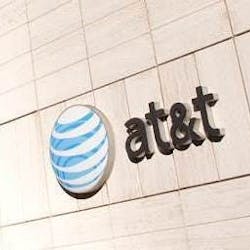After decades of relying mainly on coaxial cable for sustenance, the cable industry is embracing a high-fiber diet like never before.
That message came through loud and clear at the latest SCTE Cable-Tec Expo show in Philadelphia earlier this fall. In various sessions throughout the three-day engineering extravaganza, senior cable technology execs sang the praises of fiber-to-the-premises (FTTP) architecture and spelled out their plans for rolling out PON-based services over fiber lines.
In one prominent example, Rob Howald, a Comcast Fellow and vice president of network architecture at Comcast Cable, said the nation’s largest MSO plans to start integrating FTTP and PON into its cable hybrid fiber/coax (HFC) architecture sometime next year. That integration move is part of Comcast’s overall effort to offer multi-gig speeds throughout the country with the aid of Distributed Access Architecture (DAA) technology, the new DOCSIS 4.0 spec, and various flavors of PON.
“Anything that connects to Ethernet is eligible to be your last mile… and pretty much everything connects to Ethernet,” Howald said, explaining the company’s strategy at a Light Reading breakfast forum at Expo. “A natural first complement after DOCSIS for cable is fiber-to-the-home.”
Howald was far from the only top cable technologist to embrace fiber networks and PON technology at the mid-September show. Speaking at the same forum as Howald, Pao Lo, vice president of network engineering at Midco, said the midsized operator is prepping for the fiber future even as it continues to upgrade its legacy HFC plant for new and improved versions of DOCSIS. “I think every operator is in various stages of their evolution of HFC,” Po said.
As part of that evolution strategy, Midco recently announced plans to deploy fiber-to-the-premises (FTTP) to more than 65,000 homes and businesses in the Lawrence, KS, area and offer 10-gig service over those lines using XGS-PON technology. Midco will concentrate initially on deploying FTTP in its most competitive markets throughout the Midwest and targeting PON services to high-bandwidth customers.
“I think fiber is the end-game,” Lo said. “Ideally, we’d love to get to fiber, but we have a legacy plant that we have to upkeep and also be able to maintain competitiveness.”
Similarly, GCI, Alaska’s biggest cable operator, sees fiber and PON playing a bigger role in its future even as it keeps boosting data speeds and upgrading its HFC plant for improved versions of DOCSIS. The operator now offers downstream speeds as high as 2-gig over its sprawling HFC plant.
Speaking at the Light Reading forum, Victor Esposito, vice president of engineering and architecture for GCI, said the operator will also target fiber and PON to heavy-bandwidth users. Echoing Howald, he hailed the flexibility of DAA technology, which makes it easier for cable companies to upgrade their networks with either coax or fiber lines.
“We’re getting DAA out there,” he said. With the help of that technology, he noted, “you’ve got fiber options and you’ve got DOCSIS options.” The cable industry’s newfound love for deploying fiber lines just about anywhere it can is not limited to the U.S. On the other side of the Atlantic, Liberty Global recently formed a joint venture with Telefónica and InfraVia Capital Partners to deploy FTTP to unserved areas throughout the U.K., aiming to reach 5 million more homes by 2026. At the same time, Liberty Networks Germany, a separate Liberty Global joint venture with InfraVia, has just begun building its own FTTP network in parts of Germany, with plans to start connecting customers to the platform before the end of this year.
Elaborating on these moves during the opening session of Expo, Liberty Global CEO Mike Fries explained that the company’s embrace of FTTP builds reflects what he called an existential moment for the entire industry. “It’s life or death [for cable],” he declared.
Smaller operators take bigger steps
Nor is the fiber feast limited to the largest MSOs. In fact, as exemplified by Midco and GCI, small and midsized cable operators are in many cases actually taking the lead.
Several leading broadband market analysts hammered home that point at Expo. For instance, Jeff Heynen, vice president of broadband access and home networking at Dell’Oro Group, said he’s now seeing cable operators of all sizes pursuing FTTP builds and extensions in their markets so that they can offer faster speeds over PON.
“We’re seeing that not only at the Tier I level but also at the Tier II and Tier III levels,” Heynen said, speaking on an Expo panel focused on closing the digital divide. “It’s not only a commitment to fiber but also a commitment to multi-gigabit services.”
Heynen also noted that many operators are now building FTTP extensions from their legacy HFC architecture to reach new areas with adjacent “network edge-outs.” “There’s a clear trend here of cable operators using their existing infrastructure, particularly in rural areas, to get fiber into underserved areas,” he said.
Jaimie Lenderman, a principal analyst and research manager at Omdia, wholeheartedly agrees. Appearing on a conference wrap-up podcast for Light Reading, Lenderman, who has charted numerous FTTP deployments by smaller operators, said that over the past 12 months, she has seen a sea change in cable industry attitudes towards both fiber and PON.
“PON is an OK word to use this year and fiber is too,” she marvelled. “It’s really interesting to see there’s a multi-level, multi-technology approach to how operators [are moving to] not just remain competitive but to remain market leaders.”
The supplier view
Top technologists at major industry equipment suppliers also agreed that fiber builds and upgrades have now risen to the top of the cable industry’s crowded tech agenda.
“We’ll see them targeting deployments,” said Colin Howlett, CTO of Vecima Networks, speaking at the Light Reading breakfast forum. “We’re actually seeing a tremendous amount of PON being deployed in rural environments. We’re seeing a lot of that.”
Indeed, Vecima announced at the show that 8 of the top 12 North American cable operators have now adopted and deployed its next-generation cable and fiber access products, which include 10G-EPON Remote OLT nodes and 10G-EPON chassis platforms. Vecima also showed off its new Entra EXS1610 “All-PON” platform, which packs in 16 XGS-PON/GPON combo ports or 10G-EPON ports along with 100G, 40G, 25G, and 10G uplink options.
On the panel, Howlett argued that regardless of the future state of cable’s legacy HFC platform, operators should take the plunge on DAA. That’s because DAA will not only pave the way for DOCSIS 4.0 but also enable operators to extend fiber lines where needed. “You know the competition is coming from a speed perspective from fiber overbuilders and other competitors,” he said.
Fernando Villaruel, chief architect of the MSO practice at Ciena, went even further. Speaking during one of the two fiber-oriented sessions that Ciena hosted at Expo, Villaruel argued that it makes perfect sense for cable operators to build FTTP networks in rural, exurban, and other underserved markets, particularly given the tens of billions of dollars in public subsidies now available from the federal and state governments.
“There’s still a lot of connectivity left in rural markets,” he said, noting that tens of millions of homes remain unserved or at least underserved by broadband. He also asserted that “there’s enough money” to provide that connectivity, pointing to the U.S. government’s $42.45 billion BEAD program as the biggest potential source of those funds. “We could rewire the entire U.S. with fiber,” he noted.
Tibit Communications CTO Edward Boyd concurred that the cable industry’s fiber and PON prospects are bright. Appearing in one of the same sessions as Villaruel, Boyd said PON over FTTP makes sense for cable operators because it will allow them to boost data speeds higher and sooner than DOCSIS over HFC networks ever could.
“It’s an exciting time for PON,” said Boyd, noting that 10G PON is already available, 25G PON will soon be on the way, and 50G PON is now in the works. “The key to PON is that each version can overlay on the previous version. It’s a great technology.”
Villaruel added that PON spec upgrade cycles happen a lot quicker than those for DOCSIS, which take an average of seven or eight years. He argued that the cable industry cannot afford to wait that long for DOCSIS to keep catching up with PON, especially with bandwidth demands constantly surging.
“The bandwidth need is insatiable,” he declared. “As far as we can tell, bandwidth is going to go up forever.”
It’s not a surprise
It should not be terribly surprising to hear all these senior cable technologists sing the praises of fiber and PON. Although innovative cable technologies and techniques such as DOCSIS 4.0, DAA, spectrum mid-splits and high-splits, and network virtualization all offer plenty of promise, they simply cannot match the multi-gigabit speeds, high reliability, low latency levels, lower operational expenses, and other benefits that only all-fiber networks can deliver.
In other words, top cable executives are increasingly acknowledging that fiber represents their future. They realize that it’s only a matter of time before cable goes all-fiber or at least mostly fiber.
Count Altice USA execs as part of that growing chorus. Altice, the nation’s third-largest cable operator, has now built out its FTTP footprint to about 2 million homes passed. The company’s ambitious plans call for extending its fiber reach to as many as 2.3 million homes passed by the end of this year and up to 4 million by the end of 2023.
Outgoing Altice USA CEO Dexter Goei perhaps summed it up best while speaking at the Goldman Sachs Communacopia & Technology Conference in mid-September. He pointed out that Altice has seen higher average revenue per user (ARPU), lower customer churn rates, and better net promoter scores (NPS) since launching its new fiber-based products.
“The right thing to do was to future-proof the network,” Goei said. “Every single metric that you can imagine, that you would anticipate, is better.”
Gary Bolton is president and CEO of the Fiber Broadband Association.





